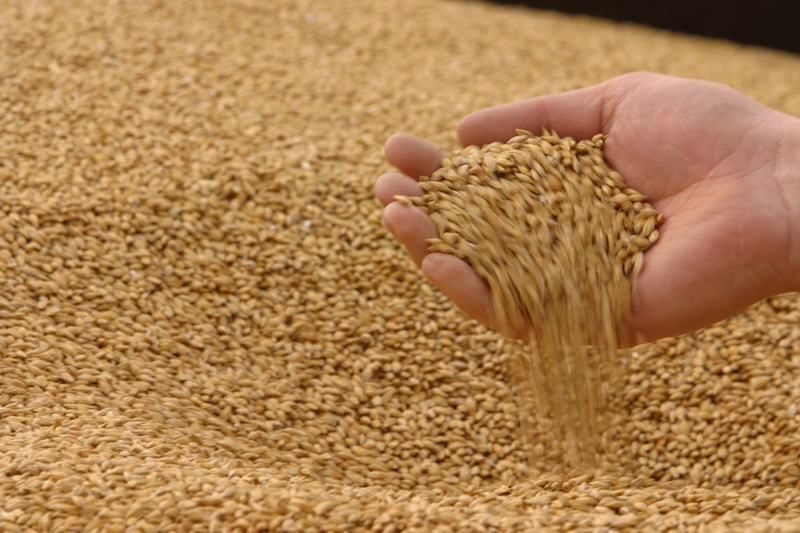Australia: Southern prices feel harvest pressure

A charge on harvest in New South Wales under mostly clear skies has seen a flurry of selling activity in the past week that has enabled most consumers to get covered into the New Year.
The Victorian harvest has also cranked up, and to everyone’s delight, rainfall recorded for both states in growing areas in the week to today has been minimal at most.
In the north, feed barley is in demand, and an unusually high proportion of malting has tightened supply in the near term.
| Prompt | Nov 24 | Jan-Feb | Nov 24 | |
| Barley Downs | $378 | $365 | $388 | $373 |
| SFW wheat Downs | $385 | $385 | $390 | $390 |
| Sorghum Downs | $420 | $420 | $385 | $385 |
| Barley Melbourne | $385 | $395 | $365 | $370 |
| ASW Melbourne | $430 | $480 | $415 | $425 |
| SFW Melbourne | $405 | $460 | $400 | $405 |
Table 1: Indicative prices in Australian dollars per tonne.
Queensland’s growing areas have had significant rain which is good news for summer crops in the ground, or area about to be planted, now that the winter-crop harvest is just about finished.
In the 24 hours to 9am today, registrations include: Clermont 17 millimetres; Dalby 15mm; Emerald and Springsure 48mm; Miles 40mm; Roma 20mm, and Surat 43mm.
Knight Commodities Goondiwindi-based broker Gerard Doherty said it feels like the northern feed wheat market has found a floor below where some growers are prepared to sell.
“It feels like in the last couple of days that selling has slowed down,” Mr Doherty said.
“The market’s come under a lot of pressure, and growers have been selling quite a bit.
“Prices have hit a little level where growers aren’t so interested in selling.”
Mr Doherty said consumers were feeling “pretty comfortable” with their level of coverage, and export demand for SFW-type wheat was holding up the market.
“We haven’t seen much SFW, and that demand has been pretty constant.”
Mr Doherty said growers planted a lot more wheat than normal at the expense of barley due to wheat’s brighter price prospects, and the market now appeared to be hunting for BAR1.
“Barley feels tight already; we don’t have anywhere near the production we normally do, and a lot’s gone into malting.”
The quality profile of barley appears to be improving from the low test weights seen in early harvested crops, where it appears the crop drowned and died rather than finished properly.
“Barley delivered Downs has firmed $10 in the past week, and a lot of buyers and consumers searching for offers for January forward.”
The harvest of early planted sorghum is expected to start in mid-January, and export demand for it appears to have eased.
Quest Commodities Gunnedah-based broker Chris Johnson said feedlots were chasing sound-quality barley, and knowing that wet and mild weather would delay harvest, have got themselves covered for the near term.
Barley generally matures earlier than wheat, and therefore appears to have copped some of the worst downgrading.
Mr Johnson said low protein in the 9-10pc range is being seen, a help to those chasing malting specs, but low test weights have been an issue in some places where waterlogging killed the plant.
Reports of test weights as low as 55 kilograms per hectolitre have come in on barley, with minimum test weights for BAR1/F1 and BAR2/F2 barley are 62.5 kilograms per hectolitre and 60kg/hL, and samples as low as 55kg/hL have been seen in flood-hit pockets of central and northern NSW.
“We’ve seen some F2 and F3,” Mr Johnson said.
“It’s the factor of the finish: Did it die or did it finish?”
Harvest from central NSW through to north-west Victoria is kicking off with canola, and good yields and high oils are evident.
“Harvest is just starting to get fired up; canola’s in full flight, and some of the wheat and barley has just gotten going,” Peters Commodities trader Peter Gerhardy said.
“We’re seeing isolated pockets of lightweight barley sticking their heads up; it’s coming off country that’s had such a hard time, and it likes a hard finish.”
Mr Gerhardy said southern consumers were mostly comfortable.
“I think there are shorts here and there on wheat and barley, and that comes down to logistics issues.”
“In general, markets have softened for Jan-June.”
“Those prices are back $10-$15 and $20 in places, and local depot prices are back $10-$15.”
Mr Gerhardy said growers could well choose to hold their grain on farm now that prices have softened, or warehouse it with bulk handlers rather than add to the sell-side pressure.
Delta Grain Marketing general manager Mick Parry said domestic consumers had confidence about what was coming and what was already available.
“There’s a big range of grades, and some off spec grain,” Mr Parry said.
“We’re seeing more grower selling, and crops are a bit bigger and a bit better than we thought.”
Read also
Wheat in Southern Brazil Impacted by Dry Weather and Frosts
Oilseed Industry. Leaders and Strategies in the Times of a Great Change
Black Sea & Danube Region: Oilseed and Vegoil Markets Within Ongoing Transfor...
Serbia. The drought will cause extremely high losses for farmers this year
2023/24 Safrinha Corn in Brazil 91% Harvested
Write to us
Our manager will contact you soon



